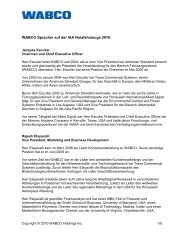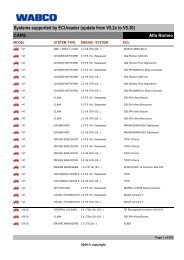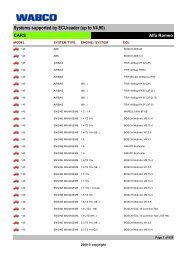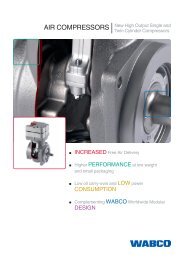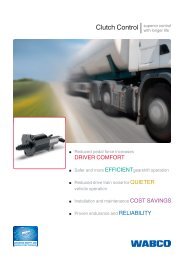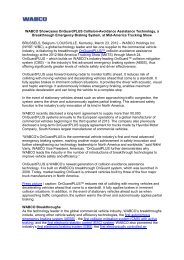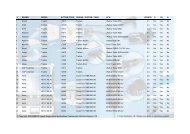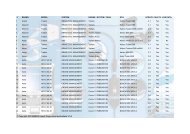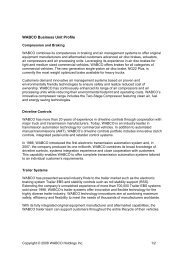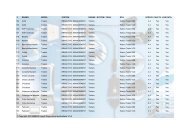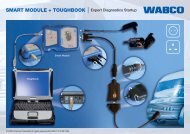Assembly And Maintenance Instructions â WABCO
Assembly And Maintenance Instructions â WABCO
Assembly And Maintenance Instructions â WABCO
Create successful ePaper yourself
Turn your PDF publications into a flip-book with our unique Google optimized e-Paper software.
Fig. 10<br />
Fig. 11<br />
Sliding Calliper Disc Brake PAN 17<br />
With an electrical wear indicator on the brake pads:<br />
When the control display lights up the minimum pad<br />
thickness is reached. Drive to a workshop where the<br />
worn pads can be replaced according to section 3.<br />
2.4 Checking brake discs<br />
Work sequences:<br />
• Remove brake pads according to section 3.<br />
• Measure disc thickness over the rubbing faces.<br />
D = total disc thickness - new 34 mm.<br />
E = wear allowance limit 28 mm, the brake disc must be<br />
renewed.<br />
Important:<br />
Observe brake pad and disc wear limits!<br />
Worn-out pads and discs reduce the<br />
brake effectiveness and cause brake failure!<br />
Danger of accidents!<br />
Always replace brake discs on a per axle basis! Generelly<br />
after the installation of new brake discs we<br />
recommend to replace the brake pads as well.<br />
Brake disc condition inspection:<br />
Check brake disc for cracks, condition of the rubbing<br />
faces and maximum wear dimension.<br />
A= crazing = permissible<br />
B = Radial cracks<br />
to max: 0.5 mm width = permissible<br />
C = unevennedd under 1.5 mm<br />
of the plate surface = permisssible<br />
D = continuous cracks = not permissible<br />
a= braking surface<br />
9



